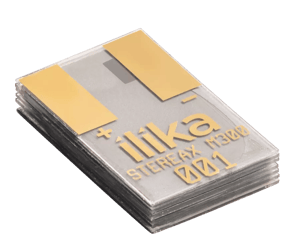AstraZeneca PLC (AZN), a titan in the healthcare sector, continues to capture investor attention with its impressive market capitalization of $223.9 billion and promising growth trajectory. As a leading biopharmaceutical company headquartered in Cambridge, UK, AstraZeneca specializes in the discovery, development, and commercialization of prescription medicines across various fields, including oncology, cardiovascular, and respiratory.
The current market dynamics show AstraZeneca trading at $71.13 per share, reflecting a slight dip of 0.68 (-0.01%) on the day. Despite this minor setback, AstraZeneca’s 52-week range of $63.20 to $87.62 indicates a resilient capacity to rebound and explore new highs. Investors looking for value will note the stock’s forward P/E ratio of 14.08, suggesting potential undervaluation when compared to industry peers.
AstraZeneca’s growth story is underpinned by a solid revenue growth rate of 7.20%. This robust expansion is further complemented by a commendable Return on Equity (ROE) of 19.79%, highlighting the company’s efficient use of shareholder funds to generate profits. With a free cash flow of over $9 billion, AstraZeneca demonstrates substantial financial flexibility to reinvest in R&D, acquisitions, or shareholder returns.
The company’s dividend yield of 2.22%, coupled with a payout ratio of 62.37%, provides a stable income stream for investors seeking both growth and income. This balance is attractive for those looking to diversify their portfolios with a blend of stability and upside potential.
Analyst sentiment towards AstraZeneca remains overwhelmingly positive, with 10 buy ratings and only 2 hold ratings, and no sell ratings. The average target price of $84.18 suggests an 18.35% potential upside from current levels, positioning AstraZeneca as an appealing prospect for growth-oriented investors. The target price range of $67.00 to $97.00 underscores the bullish outlook, with the upper range pointing towards significant potential gains.
From a technical standpoint, AstraZeneca’s 50-day moving average of $70.79 and 200-day moving average of $70.98 indicate a stable upward trend. The Relative Strength Index (RSI) of 66.52 suggests that the stock is approaching overbought territory, a factor worth monitoring for short-term traders. However, the MACD and signal line are slightly negative, which could imply a short-term consolidation before further upward momentum.
Beyond the numbers, AstraZeneca’s strategic partnerships bolster its long-term growth prospects. Its collaboration with Tempus aims to advance oncology research, while the partnership with IonQ focuses on quantum computing applications in healthcare. These alliances position AstraZeneca at the forefront of innovation, potentially unlocking new markets and revenue streams.
AstraZeneca’s comprehensive product portfolio, spanning from oncology treatments like Tagrisso to cardiovascular drugs like Crestor, ensures a diversified revenue base that can weather sector-specific downturns. Its strategic research collaboration with CSPC Pharmaceutical Group Limited further emphasizes its commitment to broadening its therapeutic offerings.
For investors eyeing the healthcare sector, AstraZeneca PLC represents a compelling blend of stability and growth potential. With a strong financial footing, positive analyst sentiment, and innovative partnerships, AstraZeneca is well-positioned to deliver value to shareholders in the coming years. As the company continues to navigate the complexities of the global healthcare landscape, its strategic initiatives and robust pipeline could very well translate into sustained shareholder returns.













































